장티푸스(장질부사), Typhoid fever(Salmonella Serotype Typhi infection/S ser. typhi infection)
(You may visit www.drleepediatrics.com – Chapter 7,
Pediatric Adolescent Infectious Diseases or제 7권, 소아 청소년 감염병 질환 웹사이트)
장티푸스(장질부사)의 원인
-
장티푸스균(살모넬라 장티푸스균/Salmonella Typhi/S. typhi)을 요즘에는 살모넬라 혈청형 장티푸스균(Salmonella Serotype Typhi/S ser. typhi)라고 한다. 이 박테리아 감염으로 생긴 급성 열성 감염병을 장티푸스(Typhoid fever), 또는 장질부사라고 한다.
-
살모넬라균에는 S ser. typhi, S ser. Typhimurium, S ser. Newport, S ser. Choleraesuis 등 여러 세균 종류가 있다.
-
닭·칠면조·소·돼지·파충류·애완동물 등이 장티푸스균을 보균하고 있는 주 병원소이다.
-
이런 동물이 보균한 장티푸스균이 사람에게 감염되면 사람이 장티푸스에 걸릴 수 있다.
-
최근 애완동물용 건 밥을 통해 장티푸스균에 감염된 예도 있다(출처; AAP News, July 2008, p.6).
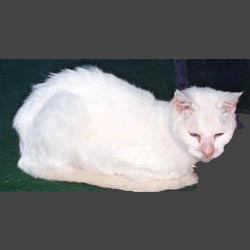
사진 2-84. 헤밍웨이 기념관 고양이.
장티푸스균이나 파라티푸스균을 보균한 고양이, 개, 소, 돼지 등의 동물에서 S ser. typhi에 감염될 수 있다.
Copyright ⓒ 2011 John Sangwon Lee, MD., FAAP
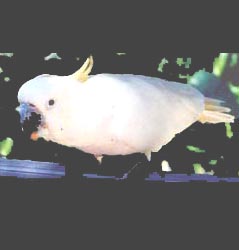
사진 2-85. 장티푸스균이나 파라티푸스균을 보균한 닭, 칠면조 또는 새 등 조류 장티푸스균에 감염될 수 있다.
Copyright ⓒ 2011 John Sangwon Lee, MD., FAAP
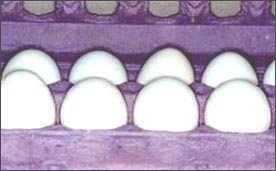
사진 2-86. 장티푸스균이나 파라티푸스균에 오염된 달걀, 닭고기, 돼지고기, 또는 쇠고기 등을 생으로 먹거나 잘 익히지 않고 먹으면 장티푸스균이나 파라티푸스균에 감염될 수 있다.
Copyright ⓒ 2011 John Sangwon Lee, MD., FAAP
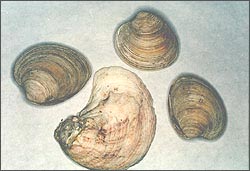
사진 2-87. 장티푸스균이나 파라티푸스균에 오염된 굴, 조개, 생선 등을 생으로 먹으면 장티푸스균이나 파라티푸스균에 감염될 수 있다.
Copyright ⓒ 2011 John Sangwon Lee, MD., FAAP
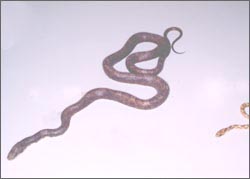
사진 2-95. 애완 뱀이나 거북이가 보균한 장티푸스균에 감염되어 장티푸스를 앓을 수 있다
Copyright ⓒ 2011 John Sangwon Lee, MD., FAAP
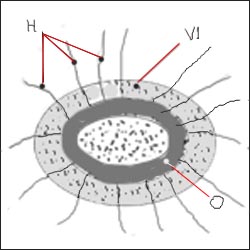
그림 2-96. S ser. typhi 균 항원 그림
H 항원, V1 항원, O 항원이 있다
Copyright ⓒ 2011 John Sangwon Lee, MD., FAAP

그림 2-89. 돼지가 장티푸스균을 보균하고 있는 병원소가 될 수 있다.
Copyright ⓒ 2011 John Sangwon Lee, MD., FAAP

사진 2-88. 소가 장티푸스균을 보균하고 있는 병원소가 될 수 있다.
Copyright ⓒ 2011 John Sangwon Lee, MD., FAAP

사진 2-92. 닭고기나 칠면조 등, 조류 고기를 통해 장티푸스균에 감염될 수 있다.
Copyright ⓒ 2011 John Sangwon Lee, MD., FAAP
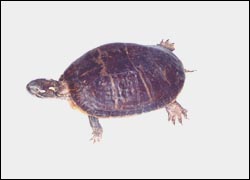
사진 -94. 애완용 뱀이나 거북이가 보균한 장티푸스균에 감염되어 장티푸스에 걸려 앓을 수 있다.
Copyright ⓒ 2011 John Sangwon Lee, MD., FAAP
-
장티푸스균 감염이 가축, 애완동물, 파충류 등의 동물들에 생겨도 동물들은 장티푸스균 감염병에 걸려 앓지 않는 것이 보통이다.
-
동물들이 보균한 장티푸스균이 사람들에게 감염되면 장티푸스에 걸릴 수 있다.
-
장티푸스를 앓는 사람의 침·가래·대소변·피 등에 있는 장티푸스균에 직접, 또는 간접적으로 감염될 때 장티푸스에 걸릴 수 있다.

사진 2-90. 쇠고기나 돼지고기를 생으로 먹을 때 장티푸스균에 감염될 수 있다.
Copyright ⓒ 2011 John Sangwon Lee, MD., FAAP
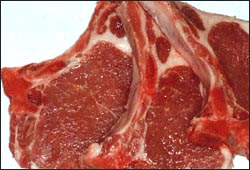
사진 2-91. 쇠고기나 돼지고기를 생으로 먹을 때나 덜 익혀 먹을 때 장티푸스균에 감염될 수 있다.
Copyright ⓒ 2011 John Sangwon Lee, MD., FAAP
-
장티푸스균을 보균한 사람이나 장티푸스를 앓는 사람의 체내에 있는 장티푸스균이 체외로 나와 다른 사람들에게 감염될 수 있다.
-
체외로 나온 장티푸스균이 계속 살아 있을 수 있는 환경 조건이 구비될 때 장티푸스균은 인체 밖에서도 오랫동안 살 수 있고, 그 장티푸스균에 다른 사람들이 감염될 수 있다.
-
장티푸스균을 보균한 사람이나 장티푸스를 앓는 사람의 대소변 등을 통해 장티푸스균이 몸 밖으로 나온 후 장티푸스균이 굴이나 조개 등 어패류에 오염될 수 있다.
-
장티푸스균에 오염된 굴이나 조개, 또는 생선 등 어패류를 날로 먹을 때, 적절히 요리하지 않고 먹을 때,
-
대변이나 소변 속으로 나온 장티푸스에 오염된 물이나 음식물을 먹으면 장티푸스에 걸릴 수 있다.
-
잠복기는 10∼40일이다.
장티푸스(장질부사)의 증상 징후
-
장티푸스의 증상 징후는 다양하다.
-
다음과 같은 전형적인 증상 징후가 나타날 수 있다.
-
초기 증상 징후는 감기의 증상 징후와 거의 비슷할 수 있다.
-
장티푸스의 병세가 점차로 진전되어 악화되면 기침·고열·구토·복통·설사·두통·경기·탈수·식욕부진·체중감소·코피·헛소리·피부 발진 등 여러 가지 증상 징후들이 나타날 수 있다. 그 중 일부만 나타날 수 있고, 전부가 나타날 수 있다.
-
드물게, 장티푸스균 폐렴이나 장티푸스균 뇌막염이 생길 수 있다.
-
이 병을 앓는 중 장티푸스균 감염에 의해 장티푸스균 소장염이 생길 수 있고, 소장염으로 소장관 장벽이 터져 소장 천공이 생길 수 있고 소장관 내 출혈, 또는 복강 내 출혈이 생길 수 있다.
-
장티푸스균 복막염이 생길 수 있고 장티푸스균 패혈증이 생길 수 있다.
장티푸스(장질부사)의 진단
-
병력·증상·징후·진찰소견 등을 종합하여 이 병이 의심되면 환자의 구토 물·피·대소변·뇌척수액 등에서 얻은 피검 물로 장티푸스 세균 배양 검사와 장티푸스균 혈청검사 등으로 진단할 수 있다. 효소 측정검사, 라텍스 응집검사, 단클론 항체검사로 진단한다.
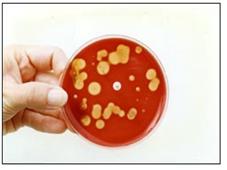
사진2-97.세균 배양검사로 장티푸스균을 찾아 확진한다. 혈액 우무 세균 배양지에 자란 세균 균집. Copyright ⓒ 2011 John Sangwon Lee, MD, FAAP
장티푸스(장질부사)의 치료
-
장티푸스균 감염으로 생긴 장티푸스균 감염병의 종류, 중증도, 합병증 유무 등에 따라 치료한다.
-
합병증이 없는 비침입성 장티푸스균 위장염은 항생제로 치료하지 않는 것이 보통이다.
-
그러나 생후 3개월 이전 영아들이나 면역 문제가 있거나 만성 질환이 있는 아이들에게 생긴 장티푸스균 위장염은 입원 치료를 받도록 권장한다. 이런 치료는 어디까지나 담당 의사의 판단에 따라 결정한다.
-
장티푸스균 감염으로 인한 패혈증, 뇌막염, 복막염 등 침입성 장티푸스 환아나 심하게 앓는 장티푸스 환아는 입원해서 항생제 혈관주사로 응급 치료하는 것이 보통이다.
-
장티푸스균 감염병으로 앓을 때나 장티푸스균 감염으로 위중하게 앓을 때는 장티푸스균이나 살모넬라균 세균검사의 결과가 나오기 전에 클로람페니콜(Chloramphenicol), Ampicillin, Amoxacillin, Septra, Ceftriaxone, 또는 Cefotaxime 등 항생제 중 적절한 항생제를 경험 적으로 선택해 치료를 시작하는 것이 보통이다.
-
세균검사의 결과가 나온 후 그 결과에 따라 적절한 항생제를 선택해서 치료하는 것이 이상적 치료이다.
-
포도당 전해질용액 혈관주사 등으로 탈수를 예방 치료하고 타이레놀 등으로 진통 해열시킨다.
장티푸스(장질부사)의 격리
-
완전히 회복 될 때까지 격리 치료한다.
-
적절한 항생제로 치료를 시작하면서 2~3일마다 환아의 대변에서 장티푸스 세균이 배양되는지 세균 배양검사를 한다.
-
장티푸스균이 대변 세균 배양 검사에서 더 이상 배양되지 않으면 환아를 더 이상 격리시키지 않는다. 이런 치료에 많은 진료비가 든다.
-
장티푸스균을 보균한 사람에게는 아목시실린이나 다른 항생제로 치료하여 장티푸스균을 더 이상 보균하지 않도록 할 수 있다.
장티푸스(장질부사)환아와 접촉한 경우
-
장티푸스균을 보균한 사람이나 이 병을 앓는 환자는 다른 사람들에게 장티푸스균을 감염시킬 수 있는 근원이 될 수 있다.
-
장티푸스균 보균자는 음식물을 요리하거나 음식물을 취급하는 데서 일하지 말아야 한다.
-
이 병을 앓는 환아와 접촉했을 때 장티푸스균 감염을 예방하기 위해 장티푸스 백신으로 예방접종을 받아도 예방접종 효과가 바로 나타나지 않는다.
장티푸스(장질부사)의 예방
-
장티푸스 예방접종 백신은 장티푸스균의 균독을 경감시켜 만든 생 장티푸스 예방접종 백신 Ty21a(Vovtif), 장티푸스균을 살균시켜 만든 사(불활성) 장티푸스 예방접종 백신 Vi CPS(Vi capsular polysaccharide vaccine), 그 외 다른 종류의 불활성 장티푸스 예방접종 백신(Parenteral inactivated vaccine) 세 종류의 장티푸스 백신이 있다.
-
이 세 종류의 장티푸스 백신 중 한 가지 백신으로 예방접종을 받은 후 면역효과는 17~60% 정도이다.
-
그 때문에 예방접종을 받은 후 대량의 장티푸스균에 감염되면 장티푸스에 걸릴 수 있다 (p.00 장티푸스 참조).
-
이런저런 이유로, 장티푸스가 발생되지 않는 지역에서 사는 건강한 소아청소년들에게 장티푸스 백신을 기본적으로 접종하지 않는다.
-
장티푸스 발병률이 많은 지역에서 사는 아이들이나 가끔 발생되는 지역에서 사는 아이들은 장티푸스 백신으로 예방접종을 받는 것이 좋다.
-
인도의 일부 지역, 라틴 아메리카, 아시아의 일부 지역, 중동, 아프리카 등의 지역으로 여행가는 사람들, 장티푸스균 보균자로 확실하게 판명된 사람과 가까이 지내는 사람들, 장티푸스 환자와 자주 접촉해야 하는 임상 검사실 요원들은 장티푸스 백신으로 예방접종 받도록 권장한다.
장티푸스(장질부사) 백신 예방접종의 방법
- 건강검진을 받고 열이 있나 알아보기 위해 체온을 재고 발열성 질병이 없고 장티푸스 예방접종 백신에 알레르기가 없고 접종 금기 사항이 없으면 다음과 같이 예방접종을 받을 수 있다.
1. 경구용 장티푸스 Ty21a 백신
-
경구용 장티푸스 Ty21a 백신은 세균독소를 경감시켜 만든 생 장티푸스 백신이다.
- 6세 이상 소아청소년들과 성인들은 경구용 장티푸스 Ty21a 백신으로 접종 받을 수 있다.
- 경구용 장티푸스 Ty21a 백신의 한 캡슐을 2일마다 총 4 캡슐을 복용해서 접종한다.
- 필요에 따라 매 5년마다 반복 접종받을 수 있다.
2. 근육주사용 장티푸스 Vi CPS 백신
-
2세 이상 유아 학령기 사춘기들과 성인들은 근육주사용 백신으로 1차 접종 받은 후 2년 후에 2차 접종을 받는다.
- 이 백신은 불활성 백신이다.
3. 다른 종류의 주사용 불활성 백신 Parenteral inactivated vaccine
- 2세 이하의 영유아들에게 장티푸스를 예방해줄 때 이 주사용 불활성 백신으로 예방접종을 해줄 수 있다. 부작용이 많이 생길 수 있다.
- 때문에 이 예방접종 백신을 널리 쓰이지 않는다.
- 4주 간격을 두고 피하주사로 2회 접종한다.
Typhoid fever (Salmonella Serotype Typhi infection/S ser.typhi infection) 장티푸스(장질부사)
Causes of typhoid fever
• Typhoid bacteria (Salmonella Typhi/S. typhi) are now called Salmonella Serotype Typhi/S ser. typhi. The acute febrile infection caused by this bacterial infection is called Typhoid fever. There are several types of bacteria, including Choleraesuis, S ser. typhi, S ser. Typhimurium, S ser. Newport, S ser..
• Chickens, turkeys, cattle, pigs, reptiles, and pets are the main carrying typhoid bacteria.
• People can get typhoid if they infect humans with the typhoid bacteria that these animals carry.
• Recently, there has been a case of infection with typhoid bacteria through dry rice for pets (source; AAP News, July 2008, p.6).

Photo 2-84. Hemingway Memorial Cat. In animals such as cats, dogs, cattle, and pigs carrying typhoid bacteria or paratyphoid bacteria, S ser. typhi. Copyright ⓒ 2011 John Sangwon Lee, MD., FAAP

Photo 2-85. You can be infected with avian typhoid bacteria, such as chickens, turkeys or birds that carry typhoid or paratyphoid bacteria. Copyright ⓒ 2011 John Sangwon Lee, MD., FAAP

Photo 2-86. If you eat raw or uncooked eggs, chicken, pork, or beef contaminated with typhoid bacteria or paratyphoid bacteria, you may be infected with typhoid bacteria or paratyphoid bacteria. Copyright ⓒ 2011 John Sangwon Lee, MD., FAAP

Photo 2-87. If you eat raw oysters, shellfish, fish, etc. that are contaminated with typhoid or paratyphoid bacteria, you may be infected with typhoid or paratyphoid bacteria. Copyright ⓒ 2011 John Sangwon Lee, MD., FAAP

Photo 2-95. Pet snakes or turtles can become infected with the carrier typhoid bacteria, resulting in typhoid fever Copyright ⓒ 2011 John Sangwon Lee, MD., FAAP

Figure 2-96. S ser. typhi bacillus antigen illustration There are H antigen, V1 antigen, and O antigen. Copyright ⓒ 2011 John Sangwon Lee, MD., FAAP

Figure 2-89. Pigs can become pathogens carrying typhoid bacteria. Copyright ⓒ 2011 John Sangwon Lee, MD., FAAP

Photo 2-88. Cattle can be a pathogen carrying typhoid bacteria. Copyright ⓒ 2011 John Sangwon Lee, MD., FAAP

Photo 2-92. You can get typhoid bacteria from bird meat, such as chicken or turkey. Copyright ⓒ 2011 John Sangwon Lee, MD., FAAP

Photo-94. Pet snakes or turtles can become infected with the bacteria that carry typhoid fever, which can lead to typhoid disease. Copyright ⓒ 2011 John Sangwon Lee, MD., FAAP
• Although typhoid infection occurs in animals such as livestock, pets, and reptiles, animals usually do not suffer from typhoid infection.
• People can get typhoid if they infect people with the bacteria that animals carry.
• You can get typhoid when you are directly or indirectly infected with the typhoid bacteria in the saliva, sputum, feces, and blood of a person with typhoid.

Photo 2-90. Raw beef or pork can be infected with typhoid bacteria. Copyright ⓒ 2011 John Sangwon Lee, MD., FAAP

Photo 2-91. When eating raw or undercooked beef or pork, you can become infected with typhoid bacteria. Copyright ⓒ 2011 John Sangwon Lee, MD., FAAP
• Typhoid bacteria in the body of people with typhoid or typhoid fever can come out of the body and infect other people.
• Typhoid bacteria can live for long periods of time outside the body, and other people can infect the typhoid bacteria when environmental conditions are established to keep the typhoid bacteria out of the body.
• Typhoid bacteria can be contaminated with fish and shellfish such as oysters and shellfish after the typhoid bacteria come out of the body through the stool of a person who has typhoid bacteria or a person suffering from typhoid fever.
• When eating raw fish or shellfish contaminated with typhoid bacteria, such as oysters, shellfish, or fish, when eating without proper cooking,
• If you eat water or food contaminated with typhoid from your stool or urine, you can get typhoid.
• The incubation period is 10 to 40 days.
Symptoms, signs of typhoid fever
• Symptoms of typhoid fever vary.
• Typical symptoms, signs may appear, such as:
• Initial symptoms may be similar to those of a cold.
• If the condition of typhoid fever gradually progresses and worsens, various symptoms such as cough, high fever, vomiting, abdominal pain, diarrhea, headache, competition, dehydration, anorexia, weight loss, nosebleeds, bullshit, and skin rash may appear. Only some of them may appear, and all may appear.
• In rare cases, typhoid pneumonia or typhoid meningitis may develop.
• Typhoid infection may lead to typhoid small enteritis and may cause small intestinal perforation, bleeding in the small intestine, or bleeding in the abdominal cavity due to the rupture of the small intestinal tract due to small enteritis.
• Typhoid peritonitis can develop and typhoid sepsis can occur.
Diagnosis of typhoid fever
• If the disease is suspected by taking the medical history, symptoms, signs, and medical findings together, it can be diagnosed through a typhoid bacterial culture test and a typhoid germ serum test with specimens obtained from the patient’s vomiting water, blood, feces, cerebrospinal fluid, etc.
Diagnosis is performed by enzyme measurement test, latex aggregation test, and monoclonal antibody test.

Picture 2-97. A bacterial culture test is performed to find and confirm typhoid bacteria. Bacterial colonies grow in blood mud bacterial cultures. Copyright ⓒ 2011 John Sangwon Lee, MD, FAAP
Treatment of typhoid fever
• Treated according to the type, severity, and complications of typhoid infection caused by typhoid infection.
• Non-invasive typhoid gastroenteritis without complications is usually not treated with antibiotics.
• However, inpatient treatment is recommended for typhoid gastroenteritis in infants before 3 months of age or in children with immune problems or chronic conditions. These treatments are decided at the discretion of the doctor in charge.
• Children with invasive typhoids, such as sepsis, meningitis, and peritonitis caused by typhoid infection, or severely ill children with typhoid fever are hospitalized and emergency treatment is usually given with an antibiotic vascular injection.
• When suffering from a typhoid infection or severely ill due to a typhoid infection, experience with appropriate antibiotics such as Chloramphenicol, Ampicillin, Amoxicillin, Septra, Ceftriaxone, or Cefotaxime before the results of typhoid or Salmonella bacterial test is obtained. It is common to start treatment by selecting it.
• The ideal treatment is to select and treat an appropriate antibiotic according to the results of the bacteriological test.
• Prevent and treat dehydration with glucose electrolyte solution vascular injection, and relieve pain and fever with Tylenol.
Isolation of patient with typhoid fever
Treat in isolation until full recovery.
• Bacterial culture tests are performed every 2 to 3 days for the culture of typhoid bacteria in the child’s stool, starting with the appropriate antibiotics.
• Children are no longer quarantined if typhoid bacteria are no longer cultured in the stool culture test. These treatments cost a lot of medical bills.
• People with typhoid bacteria can be treated with amoxicillin or other antibiotics so they no longer carry the typhoid bacteria. In case of contact with a child with typhoid fever
• People with typhoid bacteria, or people with the disease, can be a source of infection in others.
• People with typhoid bacteria should not cook or work in food handling.
• If you are in contact with a patient with this disease, even if you are vaccinated with a typhoid vaccine to prevent a typhoid infection, the vaccination effect does not appear immediately.
Prevention of typhoid fever
• Typhoid vaccination vaccine is a live typhoid vaccination vaccine Ty21a (Vovtif), a live typhoid vaccination vaccine made by alleviating typhoid bacteria, Vi capsular polysaccharide vaccine (Vi CPS), and others.
Types of Inactive Typhoid Vaccination
There are three types of typhoid vaccines.
• After being vaccinated with one of these three types of typhoid vaccine, the immune effect is about 17-60%.
• Because of that, if you get a lot of typhoid bacteria after getting vaccinated, you can get typhoid (see Typhoid).
• For one reason or another, the typhoid vaccine is not provided by default to healthy children and adolescents who live in areas where typhoid fever does not occur.
• Children living in areas with a high incidence of typhoid fever, or children living in areas with occasional typhoid, should be vaccinated with a typhoid vaccine.
• People traveling to parts of India, parts of Latin America, parts of Asia, the Middle East, Africa, etc., people who are close to people who have been clearly identified as carriers of typhoid, and clinical laboratory personnel who need frequent contact with people with typhoid. It is recommended to be vaccinated with a typhoid vaccine.
Typhoid vaccination method
• If you have a health checkup, take your body temperature to see if you have a fever, do not have a fever, are allergic to the typhoid vaccination vaccine, and have no contraindications, you can get the following vaccinations.
1. Oral typhoid Ty21a vaccine
• The oral typhoid Ty21a vaccine is a live typhoid vaccine made by reducing bacterial toxins.
• Children over 6 years of age and adults can be vaccinated with the oral typhoid Ty21a vaccine.
• One capsule of the Ty21a vaccine for oral typhoid is administered every 2 days for a total of 4 capsules.
• Repeat vaccination every 5 years as needed.
2. Typhoid Vi CPS vaccine for intramuscular injection
• Infants over 2 years of age School-age adolescents and adults receive the first dose of intramuscular injection and then the second dose two years later.
• This vaccine is an inactive vaccine.
3. Parenteral inactivated vaccines for other types of injection
• To prevent typhoid in infants and young children under 2 years of age, this inert vaccine for injection can be used to immunize them. There can be many side effects.
• Because of this, this vaccination vaccine is not widely used.
• Inoculate twice by subcutaneous injection at 4 weeks intervals.
출처 및 참조 문헌 Sources and references
- NelsonTextbook of Pediatrics 22ND Ed
- The Harriet Lane Handbook 22ND Ed
- Growth and development of the children
- Red Book 32nd Ed 2021-2024
- Neonatal Resuscitation, American Academy Pediatrics
-
www.drleepediatrics.com제7권. 소아청소년 감염병
-
Red book 29th-31st edition 2021
-
Nelson Text Book of Pediatrics 19th- 21st Edition
-
The Johns Hopkins Hospital, The Harriet Lane Handbook, 22nd edition
-
Childhood Emergencies in the Office, Hospital and Community, American Academy of Pediatrics
-
Emergency Medical Service for Children, By Ross Lab. May 1989. p.10
-
Emergency care, Harvey grant, and Robert Murray
-
Emergency Care Transportation of Sick and Injured American Academy of Orthopaedic Surgeons
-
Emergency Pediatrics A Guide to Ambulatory Care, Roger M. Barkin, Peter Rosen
-
Immediate care of the acutely ill and injured, Hugh E. Stephenson, Jr
-
The Critically Ill Child, Diagnosis and Management, Edited by Clement A. Smith
-
Emergency Medical Services for Children: The Role of the Primary Care Provider, America Academy of Pediatrics
-
Quick Reference To Pediatric Emergencies, Delmer J. Pascoe, M.D., Moses Grossman, M.D. with 26 contributors
-
Manual of Emergency Care
-
응급환자관리 정담미디어
-
소아가정간호백과–부모도 반의사가 되어야 한다, 이상원
-
Neonatal Resuscitation American heart Association
-
Neonatology Jeffrey J.Pomerance, C. Joan Richardson
-
Pediatric Resuscitation Pediatric Clinics of North America, Stephen M. Schexnayder, M.D.
-
Pediatric Critical Care, Pediatric Clinics of North America, James P. Orlowski, M.D.
-
Preparation for Birth. Beverly Savage and Dianna Smith
- Infectious disease of children, Saul Krugman, Samuel L Katz, Ann A. Gershon, Catherine Wilfert
-
The Harriet Lane Handbook 19th Edition
-
소아과학 대한교과서
-
제1권 소아청소년 응급의료 참조문헌과 출처
-
Other
Copyright ⓒ 2015 John Sangwon Lee, MD., FAAP
“부모도 반의사가 되어야 한다”-내용은 여러분들의 의사로부터 얻은 정보와 진료를 대신할 수 없습니다.
“The information contained in this publication should not be used as a substitute for the medical care and advice of your doctor. There may be variations in treatment that your doctor may recommend based on individual facts and circumstances. “Parental education is the best medicine.”